It takes a special kind of gun to become a household name. The AK-47 did, Glock did it, Uzi did it, but no one has done it better than the AR-15.
The AR-15, and its brother the AR-10, have become legends in their own right — with a loyal following and a whole marketplace built around them.
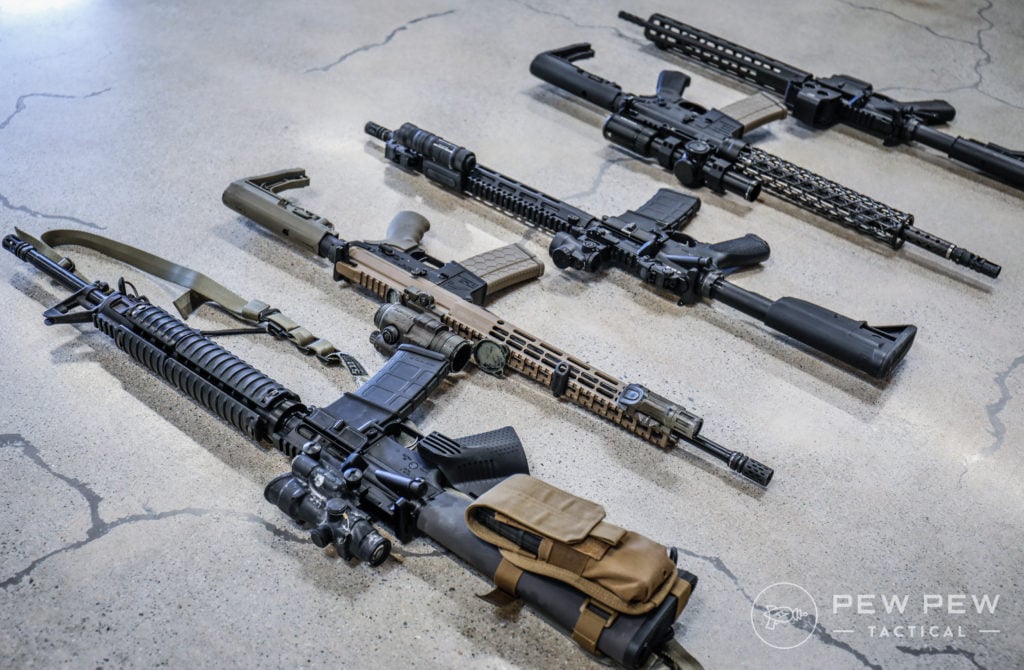
Though, AR, of course, stands for Armalite Rifle (and not assault rifle….you can read more about that here), at this point AR could very well stand for America’s Rifle.
Let’s face it, we Americans love it so much!
That said, AR-10 and AR-15 imply that there might be some other models in the AR family…
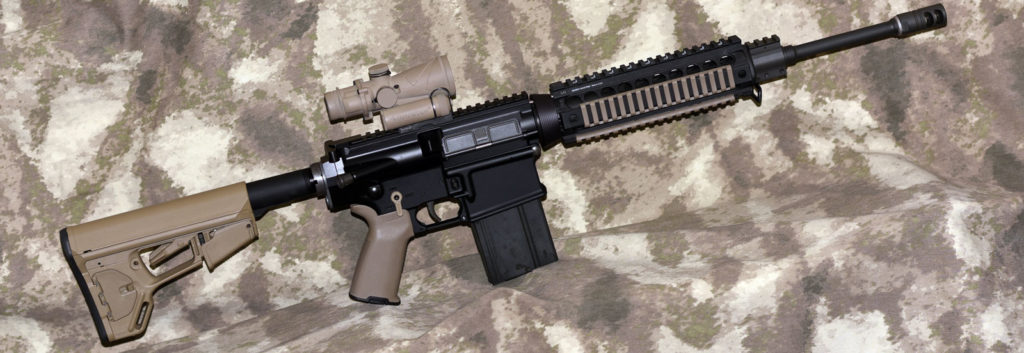
Which begs the question, what came before Armalite’s AR-15 and AR-10 or even after them?
Well, we aim to answer that question today. Buckle up as we take a tour of the other Armalites you might not have heard about.
Who knows, maybe you’ll find another one you like.
The Other Armalites
1. AR-1
Eugene Stoner’s first rifle set the tone for what would be his trademark in design.
Using the Mauser action, Stoner produced what appeared to be a functional bolt-action rifle…the AR-1.

Arriving in 1947, it earned the moniker “Para-Sniper.”
Keep in mind this was the late ‘40s, and Stoner was already thinking ahead.
In 1947, bolt-action rifles were made from wood stocks and blued steel. But Stoner designed the AR-1 with a fiberglass stock filled with foam and a barrel made from aluminum alloys.

It reportedly weighed 6-pounds and chambered in the very modern for the time .308 Winchester.
Only 25 AR-1 rifles were ever made, but you can certainly see where Mr. Stoner’s focus lies.
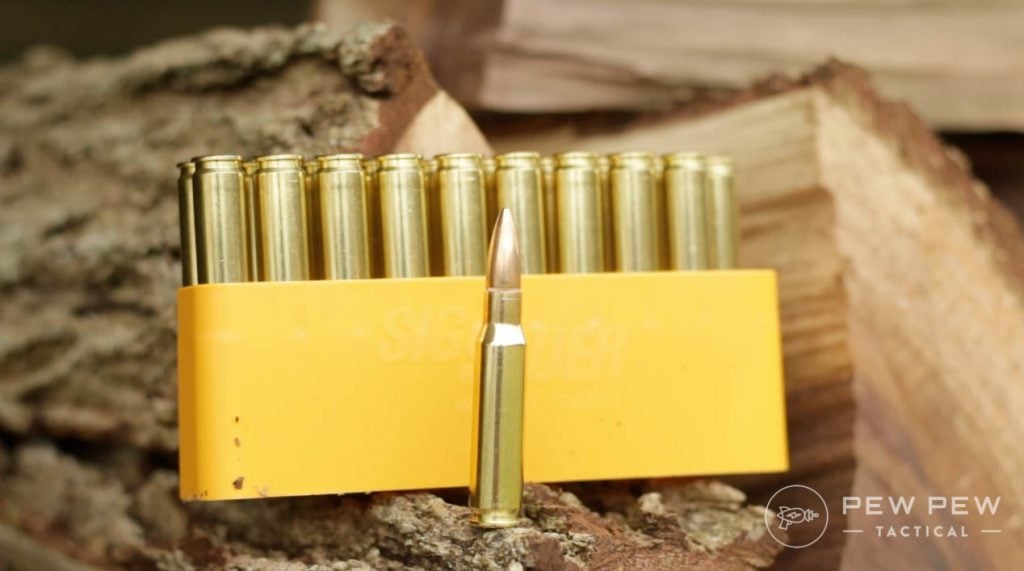
2. AR-3
Stoner joined Armalite in 1954 but designed the AR-3 in 1940.
With Armalite backing him, he produced the rifle and even submitted it to the United States military.

Like most rifles of the time, it featured a conventional layout resembling an SVT 40.
The AR-3 boasted a gas-operated design, and obviously, was a repeating rifle.
As was the tradition at the time, the AR-3 utilized the 7.62x51mm round. But Armalite broke with tradition once more in the materials used to build the gun.
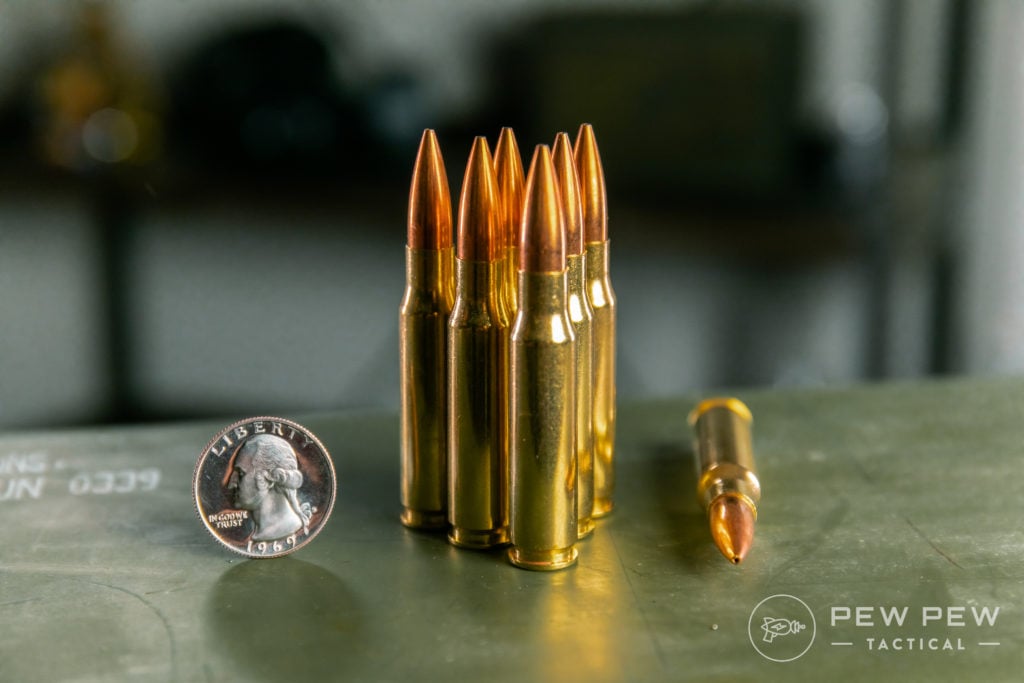
Again, they ditched wood and blued steel in favor of a fiberglass stock and aluminum receiver.
At only 8.3-pounds, the AR 3 took lightweight to a new level in the 1950s.
However, the AR-3 was never put into full production, though prototypes exist, showing us the very future of Armalite.
3. AR-7 (and AR-5)
Be it in the hands of James Bond or Archer Sterling; we’ve all seen the AR-7. Let’s face it; it’s rather popular.
Henry now produces the AR-7 as a survival rifle, true to the original goal. You see, it actually started as the AR-5.
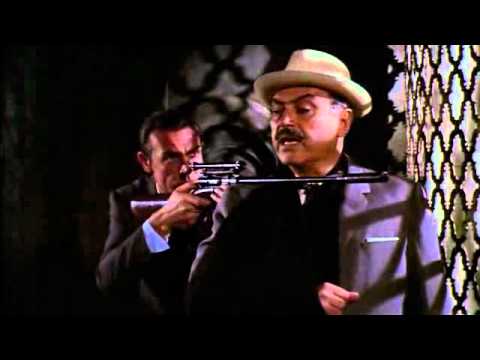
The AR-5 came first and featured a bolt-action design with .22 Hornet chambering.
Crashing an airplane is never a good time. So, the AR-5 was designed for unfortunate Air Force pilots who found themselves unexpectedly on the ground.
Offering a take-down style, this rifle brought a compact package to anyone needing to survive in the wild.
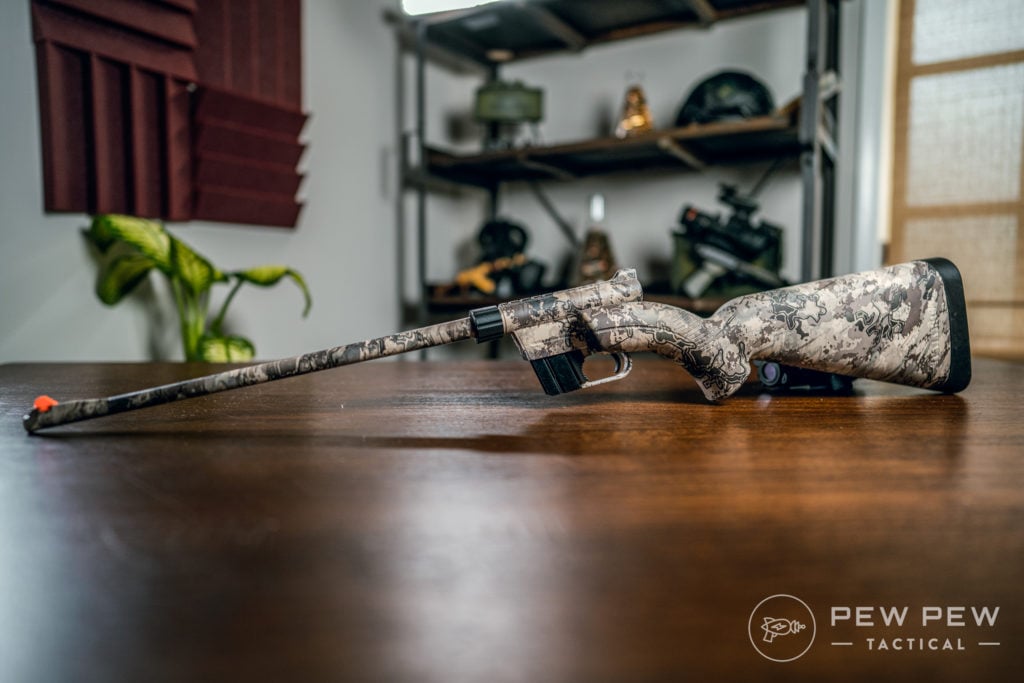
Interestingly, the AR-5 met the Air Force’s demands and became the MA-1. That said, the Air Force reportedly purchased very few of them.
The AR-5 would later be adapted into a magazine-fed semi-auto rifle known as the AR-7 — Armalite’s first commercial product.
This survival rifle remains a popular option and one you can still buy.
Prices accurate at time of writing
Prices accurate at time of writing
-
25% off all OAKLEY products - OAKLEY25
Copied! Visit Merchant
4. AR-11 Stopette
So, the AR-15 is a shrunk-down version of the AR-10, right?
Remember the AR-3…yep, the AR-11 is a smaller, more portable version of the AR-3.
Instead of a .308, though, the AR-11 utilized a .222 round.
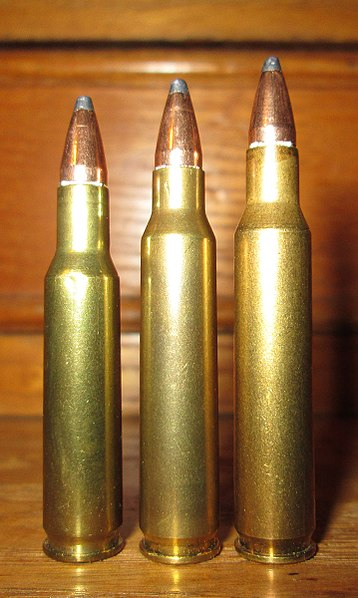
Brains at the United States Army began a series of tests known as the Small Caliber High Velocity, or SCHV, in the late 1950s.
These tests eventually led to the adoption of the AR-15, but the AR-11 took the first swing.
While the AR-3 served as the basis for the gun’s design, the gas system used in the AR-11 was a direct impingement system.
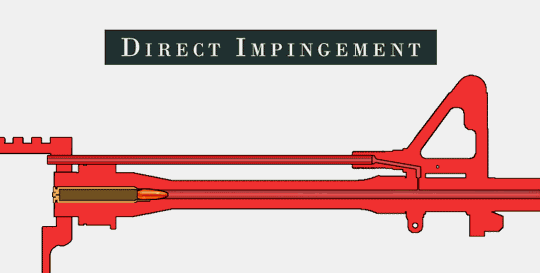
Still, plenty of fiberglass and foam was used to keep the gun’s weight down to a pleasant 6.6-pounds.
The AR-11’s story doesn’t really end well. According to an interview with L. James Sullivan, the AR-11 testing stopped when the gun blew up and injured the head of the machine shop.
From the interview, it sounded like early production of the AR-15 began soon after.
5. AR-12
The AR-12 is where things start to look more contemporary, like the AR-10/AR-15 we all know today.
It began life as a 7.62x52mm direct impingement weapon. But, once Colt purchased the patent to the gas system, Stoner welded it up, converting the rifle to a short-stroke gas piston design.
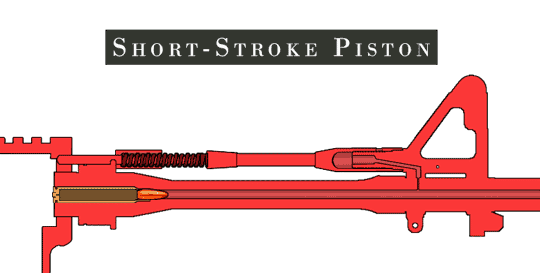
Gas runs from the front sight still, and the gas tube sits above the barrel.
Wood furniture and a side-charging handle distinguish it from modern rifles, but you can certainly see where Stoner’s mind was between the AR-10, AR-12, and AR-15.
The AR-12 never made it beyond the prototype stage. However, the short-stroke gas system would serve as inspiration for the AR-16 and AR-18.
6. The AR-13
I chased the AR-13 around the internet a bit. Various forums with decades-old posts asked the same question I did, what was this thing?

Apparently, it was an aircraft weapon — but only ever a concept. It never saw production…even as a prototype.
7. AR-14
The AR-14 experienced a bit of internet memedom when a Presidential candidate called it out by name.
Lots of smart folks brought up the fact that the AR-14 was, in fact, a real gun…well, as real as a concept rifle can be.
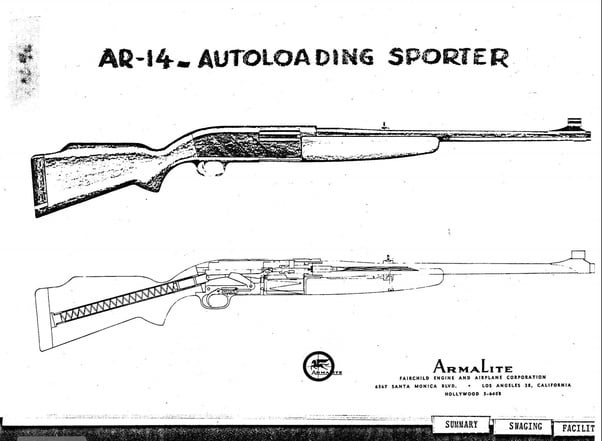
Designed as a sporting rifle with hunters in mind, this little semi-auto rifle was meant to chamber the .243 Winchester, the .308 Winchester, and a caliber called .358 Winchester.
8. AR-16
The AR-12 gave birth to the AR-16 and its short-stroke gas piston system. After Colt purchased the AR-15 design, the AR-16 became the next project on the docket.
Armalite sought to sell rifles overseas, with the AR-16 intended for that market.
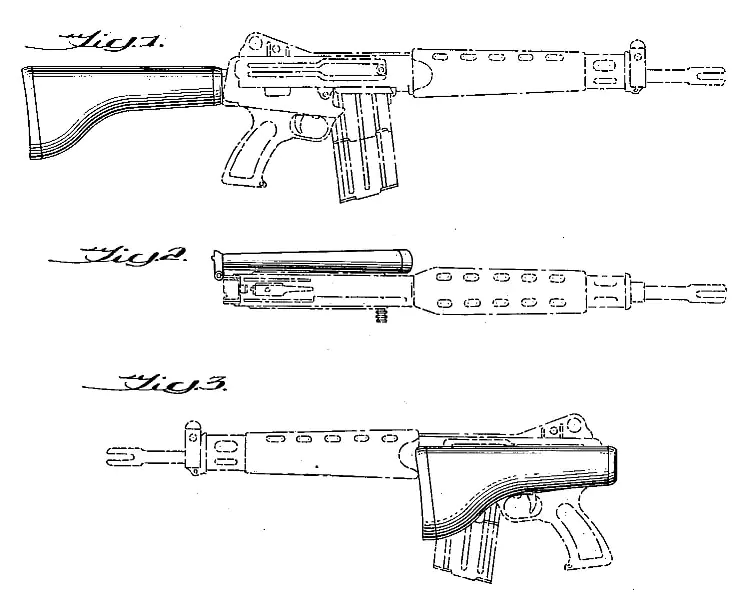
By the time the AR-15 came to be, the modern world was slowly switching to 5.56 NATO.
However, many places still clung to the readily available 7.62 NATO. So, Armalite wanted the AR-16 to be affordable and simple to produce.
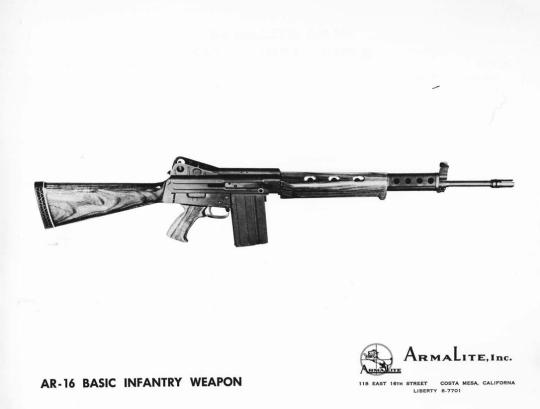
Looking like a cross between the AR-10 and FN FAL, this might have been one of the last modern military rifles ever designed with wood furniture.
9. AR-17
Armalite produced mostly rifles…but took a slight divergence into shotguns.
Their futuristic design habits…yeah, they took those too. But the AR-17’s story begins with the AR-9.

Designed in 1955, Armalite made several AR-9 prototypes. The company initially shelved the design but later brought it back as the AR-17.
It came advertised as a space-age shotgun and featured an interesting design.
This semi-auto shotgun utilized a recoil-operated system with a forward locking bolt design that came from the failed AR-16.
The AR-17 replicated the speed of a double-barrel shotgun but with a much lighter frame.

Armalite built the AR-17 as a sporting shotgun complete with fancy inscription and even gold finish on some models.
It lacked a magazine of any kind, offering only a spare round that sat in a bottom-loading shell carrier. Two rounds – that’s all you get.
At only 5.6-pounds, the gun felt lightweight, and honestly, I wish I could get my hands on one.
Possible with only 1,200 ever produced…but it’ll cost you.

10. The Middle Child – AR 18
Finally, we get to the AR-18, easily the third most successful rifle to come from Armalite.
Like the AR-16, the AR-18 was designed for export.
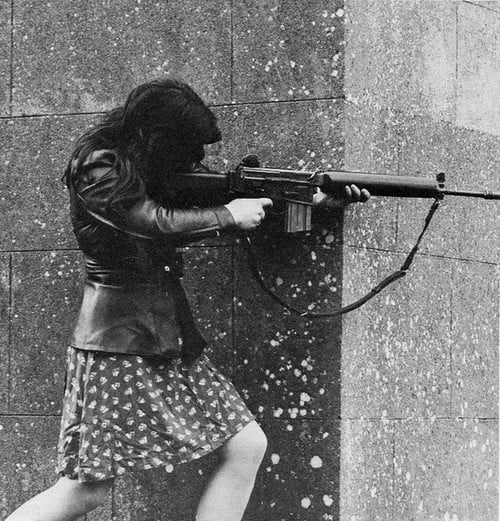
In fact, Armalite wasn’t just selling a rifle but selling a means to build one.
For countries looking to produce their own modern 5.56 rifle, Armalite offered the machining and tools.
They imbued a short-stroke gas piston system into the AR-18, utilizing lots of stamped steel and generally producing a very simple but reliable rifle.
The AR-18 saw some success with Howa in Japan and as the AR-180 on the civilian market.
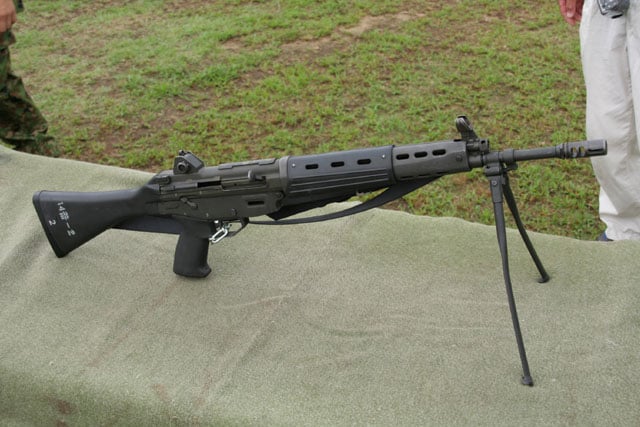
However, the gun never got close to the success of the AR-15.
But for those that want that AR-18 style, Brownells made it possible. Well…kind of.
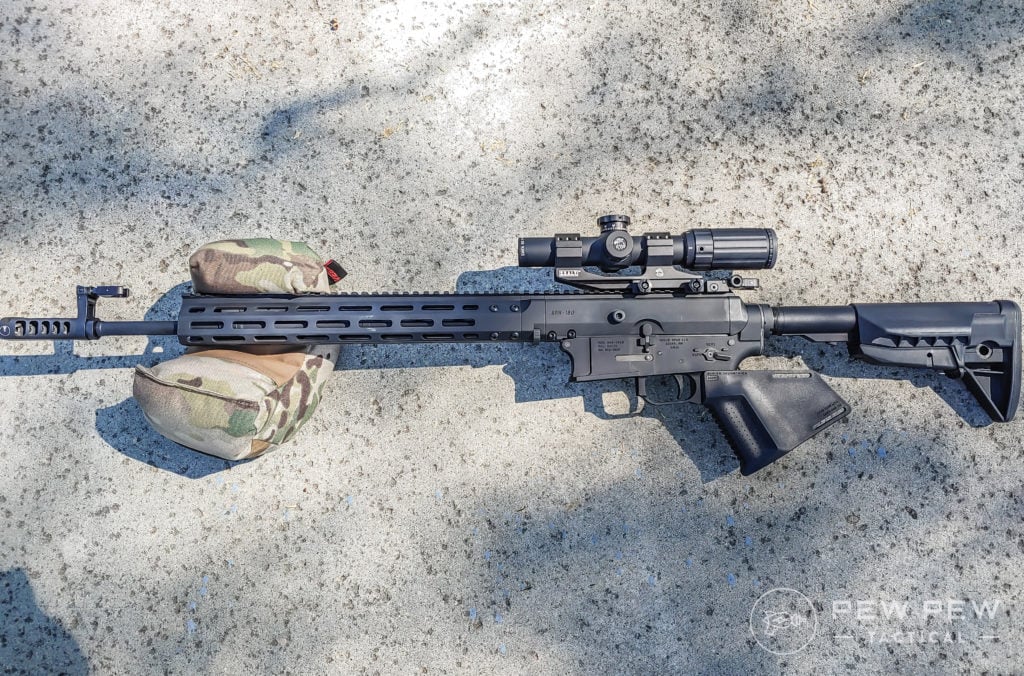
The BRN-180 offers up a modernized take on the AR-18 for those wanting to build their own AR-18 style rifle.
Want more info on the BRN-180? We have a full review here!
Prices accurate at time of writing
Prices accurate at time of writing
-
25% off all OAKLEY products - OAKLEY25
Copied! Visit Merchant
Conclusion
Though the AR-10 and AR-15 are the stars of the Armalite show, many other models came before and after.
It’s always interesting to examine the ones that almost made it.
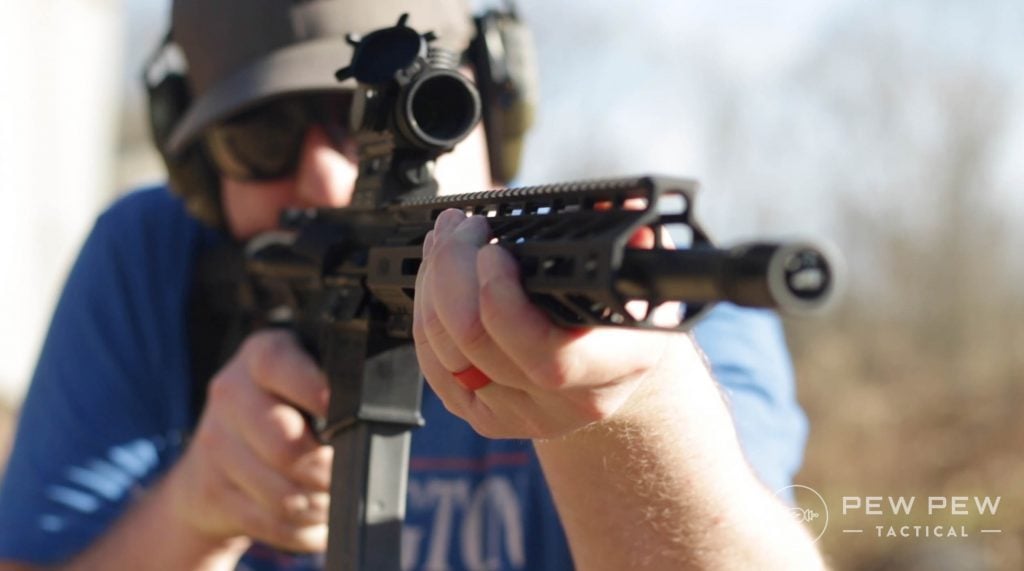
It’s worth mentioning that Armalite still exists…kind of. The OG Armalite is no more, but another company owns the brand and continues to produce some cool rifles.
They’ve made an AR-50 in .50 BMG, an AR-24 (a CZ 75 clone), and a few other models.
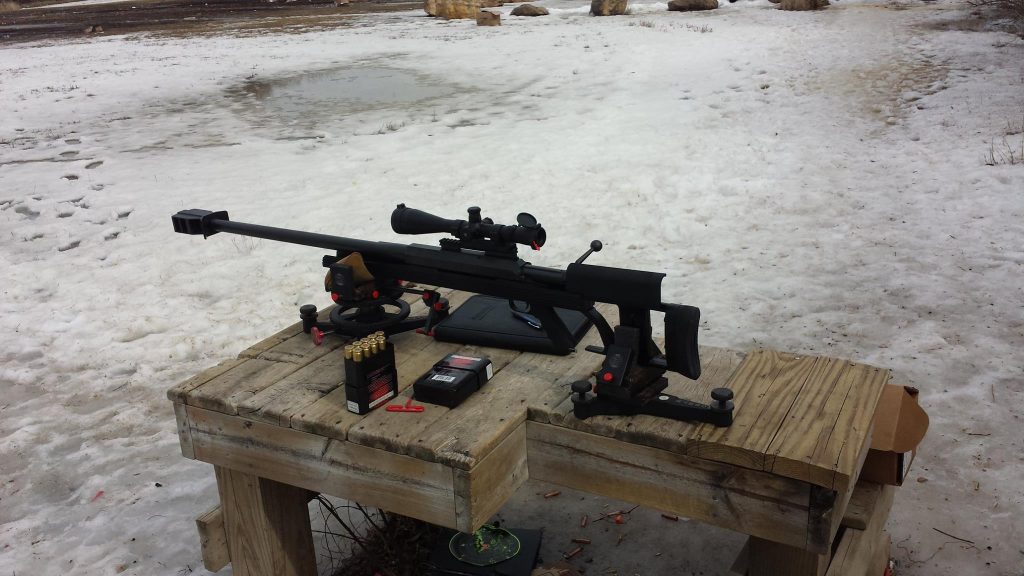
What’s your favorite Armalite branded gun? Let us know in the comments below. If you’re ready to step out of the Armalite brand but want to stay in the AR family, check out our recommendations for the 9 Best AR-15s.

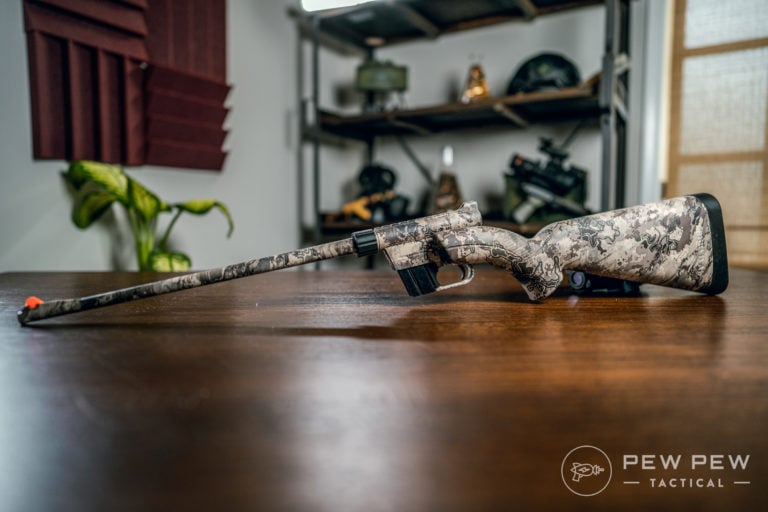

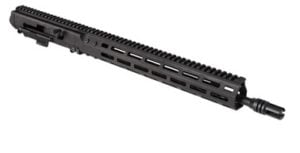







4 Leave a Reply
Hands down AR 14 is an all-time favorite
Who the fuck is archer sterling?
Whoa! Dude.... he is just the world's greatest spy!!
Actually its "Sterling Malory Archer". Its a fictional "spy" character on the adult animated sitcom "Archer" on the FX network.